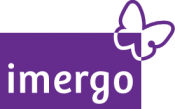If you want to manage risk, think like a weather forecaster.
Thermometer or barometer? How do you manage risk? Many organisations employ the ‘thermometer approach’: working with what has happened, or at best, the latest position – however, this simply identifies what the ‘organisational weather’ is right now. The ‘barometer approach’ challenges you to look upwards and outwards about what’s changing in your operating environment so that you can respond in a timely and optimal way.
So how can we adopt ‘barometer’ thinking?
Measure what matters – revisiting an enterprise’s primary aims helps remind us of what’s important. Using long lists of detailed risk measures can be a large overhead and may divert attention and resources on things that don’t matter. Going back to where the organisation plans to be (strategy, etc.) and how it deploys its resources (plans and budgets) will indicate what should be measured. How often does your enterprise review and revise whether this information is still needed or if new information is now required?
Sensitive to changes that matter – good approaches will measure changes in activities where the pattern is outside the usual or expected ‘behaviour’; this can also include the pace of any change. Well-designed systems have established boundaries that an organisation finds acceptable to operate within; outliers to these boundaries may suggest a significant shift in direction – although they could also be an anomaly – either way, they are worth exploring;
Dynamic and continuous – because ‘conditions’ are changing all the time, the information from risk indicators should be as current as possible from which to make an informed decision. They should be part of ongoing reporting so that alerts are made once an acceptable threshold is being approached or has been exceeded;
Historic data is limited – How does the use of historic help in managing future risks? What is the relative balance between looking back and looking forward when discussing and responding to an uncertainty? Again, is your approach ‘thermometer’ or barometer’?
Consider all the data available – much use is made of structured data (from formal systems employed already) but less so for unstructured data (organisational ‘stories’, social media)? The latter is capable of being used to measure changes in tone and atmosphere in an organisation, particularly amongst key stakeholders; the use of social media monitoring tools is helpful here. Do the indicators measure and highlight changes inside your organisation, outside, or both?
Locating the indicators – Where are the risk indicators placed in organisational systems – do they notify early enough in a process for managers have sufficient time to react? Too late and the information’s value is diminished – the risk may have materialised by the time they find out. Are they located where the most assurance is needed and report upon the areas where uncertainty is highest? The technique of ‘horizon scanning’ is particularly useful here.
Channels and speed – how does key risk information reach its recipient(s)? How effectively does it pass through your enterprise? Is it the product of multiple systems and people before it lands in an ‘in-box’, or does it arrive raw and unedited without analysis and interpretation? Where timing is crucial in managing uncertainty, knowing how and how quickly this information arrives is vital.
Ownership and data integrity – Who keeps the data? In larger organisations, they can be found at the sharp end of operations rather than in the leadership team. Are the skills needed to manage such information in short supply or concentrated in one person…with the risk of losing this expertise if there is staff turnover? How frequently is this data ‘tested’ for accuracy and reliability? Are there regular ‘health checks’ to ensure that the data is reliable for timely and key decision making.
At first glance, the idea of managing business risk bears no relation to weather forecasting but look closer and there are transferable principles. There’s no magic bullet for managing uncertainty but the above points can be helpful in meeting the challenges of a changing business landscape.

